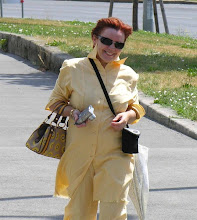I continue to talk about Israel North and today we’ll look at snow-capped Mount Hermon.
In that trip we reached the northernmost Israel city Metula but in spite of the middle of March we covered heads from the sun and spread on noses sun-protection cream but when we drove into the Metula we found a lot of signs that this town is the northernmost point of Israel: the local center of sport activities is named Canada Center and the hotels have quite “northern” names, for instance “Alaska Inn”. Nevertheless I chose for illustration a photo with four giant apples as association with Bible description of Promised Land. I believe you remember the giant grape vine cluster.
On a way to Metula we drove into the settlement Rosh Pinna. The inhabitants usually are busy in agriculture, hospitality and tourism management. I took some photos of stream flowing from Mount Kna’an and strolled around the earliest of the Galilee settlements, founded in 1888 and certainly there are some viewpoints to Mount Hermon.
And again, I address the Bible to explain the origin of the Rosh Pinna name. The name is translated as “cornerstone: “The stone which the builders rejected, it has become the heard of the corner” (Ps, 117:22). In the ancient Jewish Kabbalah tradition, Rosh Pinna is the site where the Messiah will appear at the end of the world.
Next we drove up towards to Hermon but we didn’t reach the snow slopes on this trip as hurried to see a waterfall Saar. We made a short stop at kibbuth Neve Ativ and one more illustration – a figurine of snowman that welcome the visitors at the entrance.
At the end of today’s post I represent the photo of Nimrod Fortress. Once this place belonged to order of Nizari Ismailis the members of which often called assasins, but this place and fortress deserve the separate story.










No comments:
Post a Comment